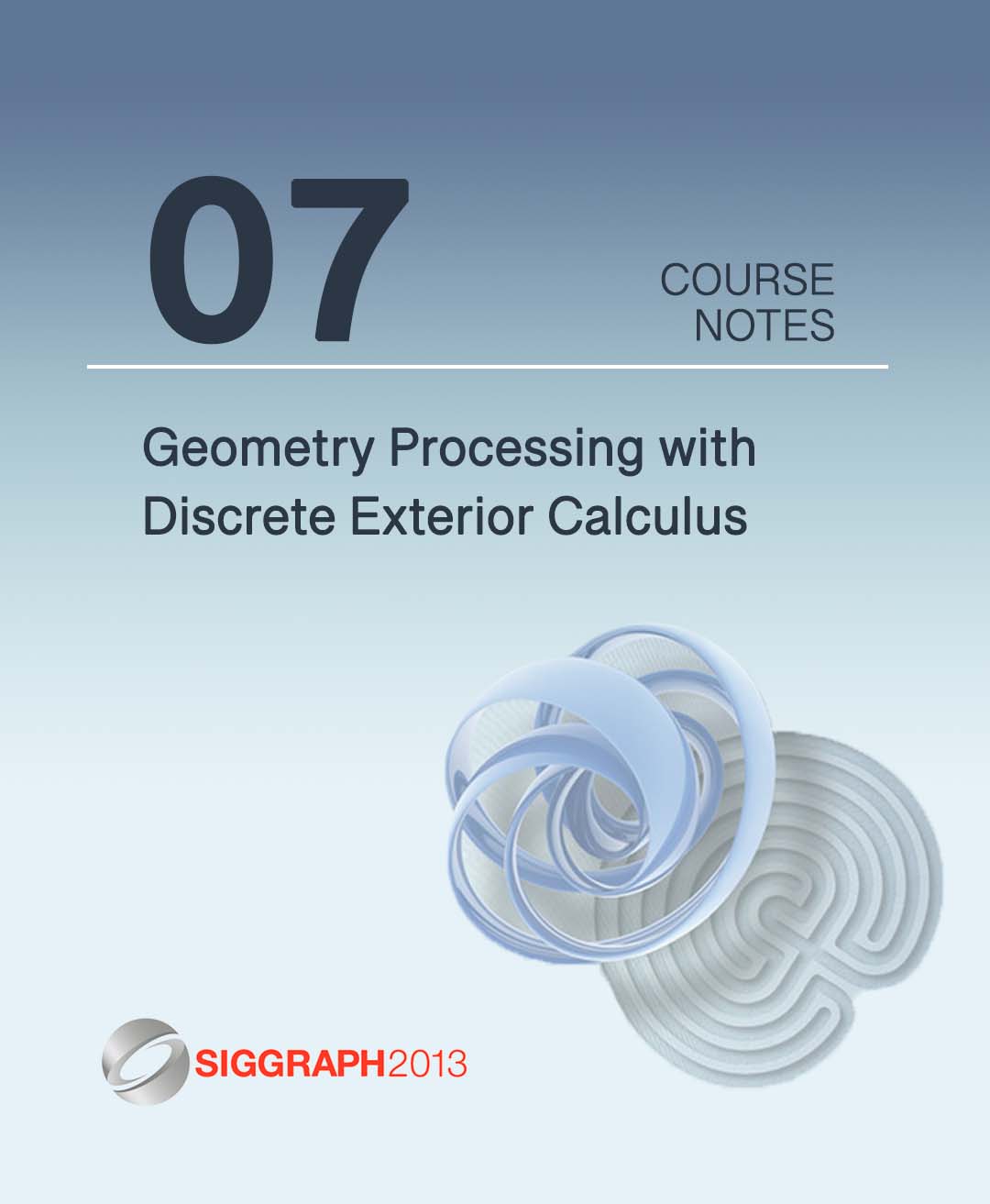“Geometry Processing With Discrete Exterior Calculus” by de Goes, Crane, Desbrun and Schröder
Conference:
Type(s):
Entry Number: 07
Title:
- Geometry Processing With Discrete Exterior Calculus
Course Organizer(s):
Presenter(s)/Author(s):
Abstract:
Prerequisites
Linear algebra, vector calculus. Background in differential geometry is helpful, but not mandatory.
Who Should Attend
Graduate students, researchers, and application developers interested in geometry-processing applications.
Description
An introduction to geometry processing using discrete exterior calculus (DEC), which provides a simple, flexible, and efficient framework for building a unified geometry-processing platform. The course provides essential mathematical background as well as a large array of real-world examples. It also provides a short survey of the most relevant recent developments in digital geometry processing and discrete differential geometry. Compared to previous SIGGRAPH courses, this course focuses heavily on \emph{practical} aspects of DEC, with an emphasis on implementation and applications.
The course begins with the core ideas from exterior calculus, in both the smooth and discrete setting. Then it shows how a large number of fundamental geometry-processing tools (smoothing, parameterization, geodesics, mesh optimization, etc.) can be implemented quickly, robustly, and efficiently within this single common framework. It concludes with a discussion of recent extensions of DEC that improve efficiency, accuracy, and versatility.
The course notes grew out of the discrete differential geometry course taught over the past five years at the California Institute of Technology, for undergraduates and beginning graduate students in computer science, applied mathematics, and associated fields. The notes also provide guided exercises (both written and coding) that attendees can later use to deepen their understanding of the material.




